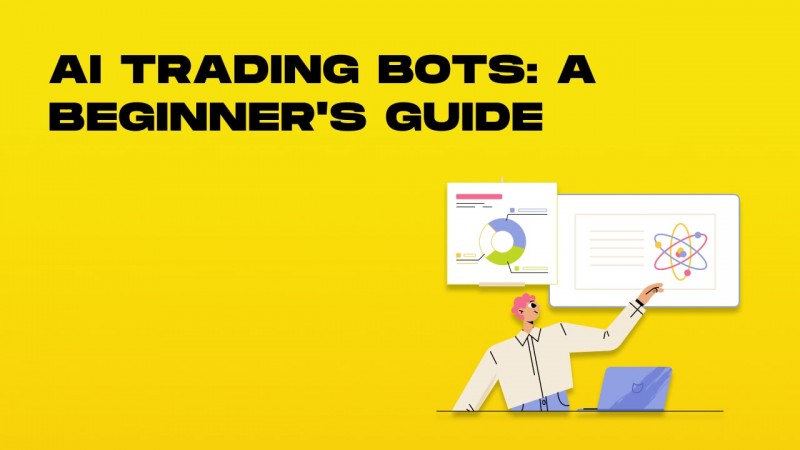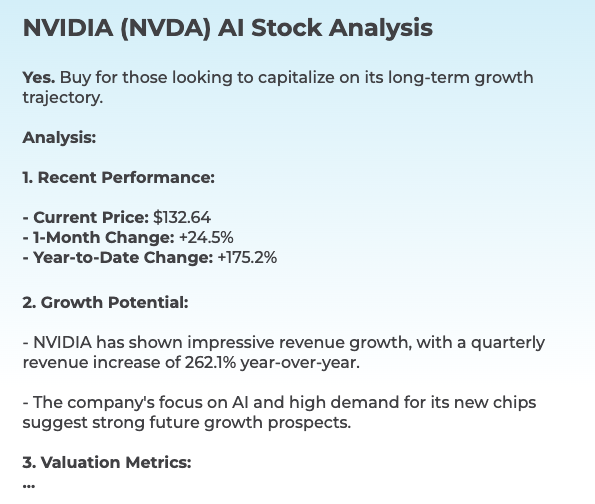20 Handy Advice On Deciding On AI Stock Predictions Analysis Websites
Wiki Article
Top 10 Tips For Evaluating The Accuracy And Performance Of Ai Platform For Predicting And Analyzing Stocks
It's important to assess the performance and accuracy of AI platforms that predict stocks and trading platforms to be sure that you're relying on tools that deliver solid insights. Here are ten top suggestions for evaluating these platforms.
1. Backtesting Results
What to look for: Make sure the platform you choose to use allows you to perform back-testing to test how accurate their predictions were basing their predictions on the past data.
What is the importance of backtesting: It lets you verify the accuracy of an AI model. You can do this by comparing predicted outcomes with actual results from the past.
Find platforms that allow users to modify backtesting parameters, such as time periods and asset classes.
2. Real-Time Performance Monitoring
What to Look For: Assess the performance of the platform in real-time market conditions.
Why It's Important Real-time performance is an excellent indicator of the performance of a system than historical backtesting.
Tips: Try a no-cost trial account or demo account to see how you compare the market's real-time forecasts with actual market movements.
3. Prediction Error Metrics
What to Look for Utilize metrics like Mean Absolute Error, Root Mean Squared Error or R-squared in order to measure the accuracy of your predictions.
Why it is Important : These metrics provide a quantifiable way to determine how close predictions are to the actual outcomes.
Tip: Platforms who openly reveal these metrics are more transparent.
4. Win Rate and Success Ratio
What to Look For: Check the platform's win rate (percentage of predictions that are correct) and success ratio (profitability of trades based on predictions).
Why is it Important The high win rate and success ratios indicate greater accuracy in prediction and a higher chance of profit.
Be wary of platforms which boast of having a very high win rate (e.g. 90%) %+),) since the system cannot assure 100 100% success.
5. Benchmarking Market Indicators
What to Look for: Examine the predictions and performance of the platform against major market indices.
Why it is Important This will help determine if the platform outperforms or is underperforming the market in general.
TIP: Look for consistent outperformance over multiple intervals, not only short-term gains.
6. Consistency in Market Conditions
What to be looking for What to look out for: How the platform performs when there are different market conditions.
What is important The platform must be able of performing in all types of market environments and not only when the conditions are favorable.
Tip: Test the predictions of the platform in volatile times or during market fluctuations.
7. Transparency in Methodology
What to Look For: Understand the AI algorithms and models that are used (e.g. neural networks, reinforcement learning).
Why It Matters Transparency is essential as it allows you to determine the accuracy and reliability of the system.
Tips: Stay clear of platforms that employ "black box" models without explaining how they generate predictions.
8. Tests and User Reviews
What to look for: Read reviews from users and verify independent testing.
Why it is Important Tests and reviews conducted by independent researchers provide objective information on the performance and accuracy of the platform.
Tip: Check forums like Reddit, copyright, or financial blogs for user experiences.
9. Risk-Adjusted Returns
What to look for: Use risk-adjusted metrics such as the Sharpe Ratio (or Sortino Ratio), to assess the platform's performance.
What is important The metrics are based on the amount of risk is taken to produce returns. This provides the most complete picture of performance.
Tip: A high Sharpe Ratio (e.g. over 1) suggests higher risk-adjusted return.
10. Long-term track records
What to Look for What to look for: Examine the platform's performance over time (e.g. 3-5 years).
What is important: Long-term results are a better measure of reliability than short-term results.
TIP: Don't use platforms that demonstrate only temporary or limited success.
Bonus Tip Test with a Demo account
Demo accounts or trial versions let you check the accuracy of the prediction system in real-time without the risk of putting your money at risk. This will allow you to test the accuracy and effectiveness.
If you follow these guidelines, you can thoroughly examine the reliability and accuracy of AI analysis and stock prediction platforms. You should select one that is compatible with your investment goals and the risk you are willing to accept. Be aware that no platform can be trusted. Therefore, combining AI insight and your own research along with the predictions made by the platform is typically the best choice. See the best ai investing app for blog advice including best ai trading software, ai stocks, stock ai, options ai, ai trading tools, best ai stock trading bot free, ai stock trading app, ai for trading, ai stocks, best ai stock trading bot free and more.

Top 10 Suggestions For Looking At The Scalability Ai Trading Platforms
In order to ensure that AI-driven trading platforms and prediction systems are able to handle the growing amount of data, user requests and market complexity it is vital to determine their capacity. These are the top 10 ways to evaluate scalability:
1. Evaluate Data Handling Capacity
TIP: Ensure that the platform is able to process and analyze massive datasets.
Why: Scalable systems must handle the volume of data that is growing without performance degradation.
2. Testing Real Time Processing Capabilities
Tips: Check how the platform can process real-time data streams, such as live stock prices, or breaking news.
Why: Real-time analysis is critical in trading decisions, and delay can result in missing opportunities.
3. Cloud Infrastructure Elasticity and Check
Tips: Determine if the platform can dynamically scale resources, and if it uses cloud infrastructure (e.g. AWS Cloud, Google Cloud, Azure).
Why: Cloud-based platforms provide elasticity. They permit the system to be scaled up or down according to the need.
4. Algorithm Efficiency
Tips: Find out the effectiveness of AI models utilized to make predictions (e.g. Deep Learning and Reinforcement Learning).
The reason: Complex algorithms may be resource-intensive, therefore optimizing them is crucial to scaling.
5. Examine Parallel and Distributed Computing
TIP: Make sure to check that the platform supports the frameworks of parallel processing or distributed computing frameworks.
What's the reason? These technologies provide faster data analysis and processing across multiple nodes.
Review API Integration & Interoperability
Tip: Check the integration of the platform with external APIs.
What's the reason? Seamless Integration makes sure that the platform is able to easily adapt to changes in data sources, trading environments and other elements.
7. Analyze User Load Handling
You can simulate user traffic and see how the platform responds.
The reason: Scalable platforms must offer the same level of performance regardless of how many users there are.
8. Review the model's retraining capacity and adjustability
Tip: Assess how frequently and effectively the AI models are trained with new data.
Why? Models have to constantly change to keep up with the ever-changing market to stay accurate.
9. Check for Fault-Tolerance and Redundancy
Tip: Make sure your platform is equipped with failover mechanisms to handle hardware or software failures.
Why is that downtime in trading is costly, which is why fault tolerence is important to ensure scalability.
10. Monitor Cost Efficiency
Review the costs associated with your platform, including the cloud's storage, cloud resources and computation power.
Why: The cost of scalability should not be unsustainable. Thus, it's crucial to find a balance between performance and expense.
Bonus Tip - Future-Proofing
Platforms should be designed to incorporate new technologies like quantum computing as well as advanced NLP. They also need to be able to adapt to changes in regulation.
These aspects can assist you in assessing the potential of AI-powered stock prediction as well as trading platforms. They'll also be sure they're robust efficient, reliable and ready to expand, and are future-proof. View the recommended basics on stock trading ai for site examples including investing with ai, best ai for stock trading, ai stock trader, how to use ai for stock trading, free ai stock picker, stock trading ai, best ai trading platform, best ai stocks to buy now, best ai stocks, ai stock analysis and more.
